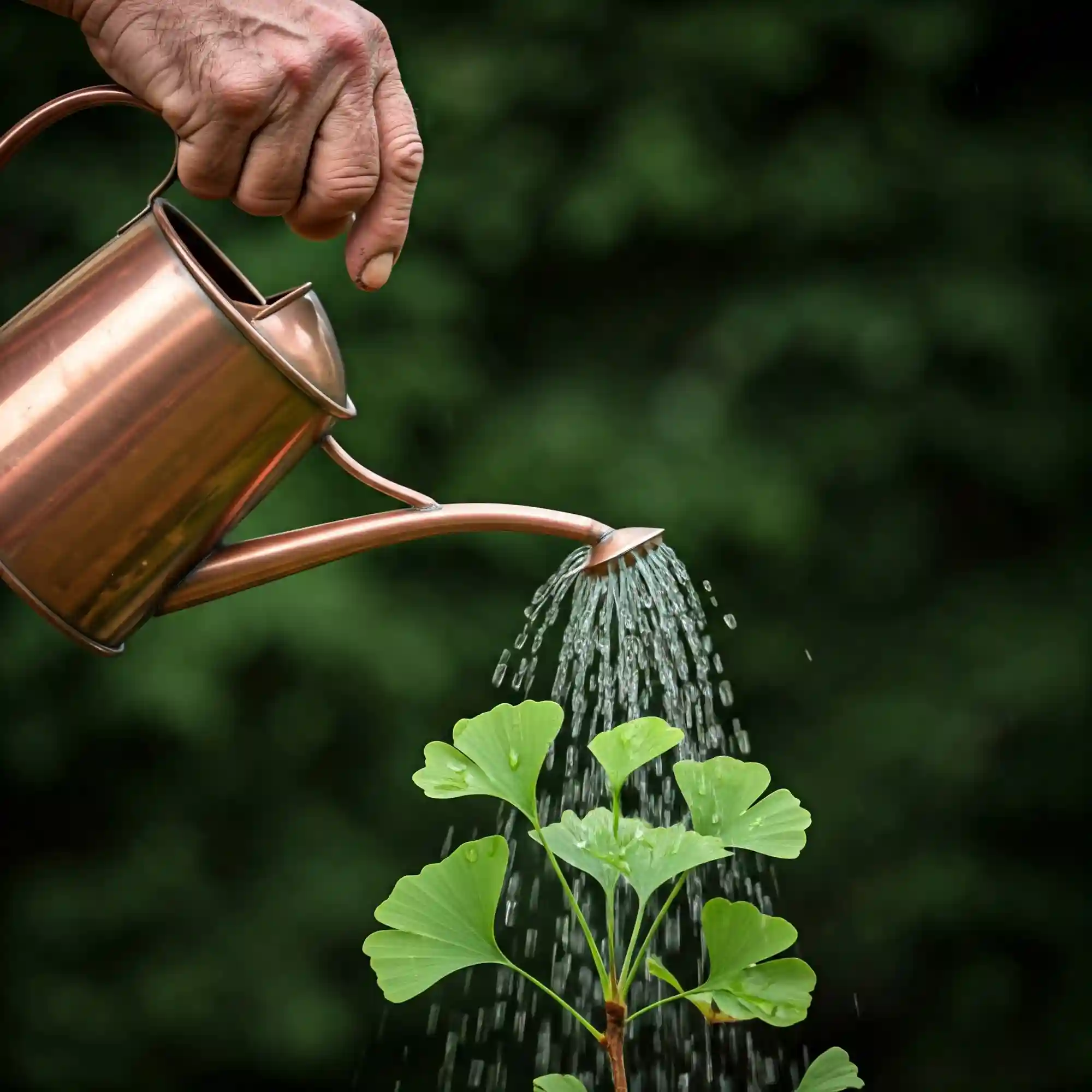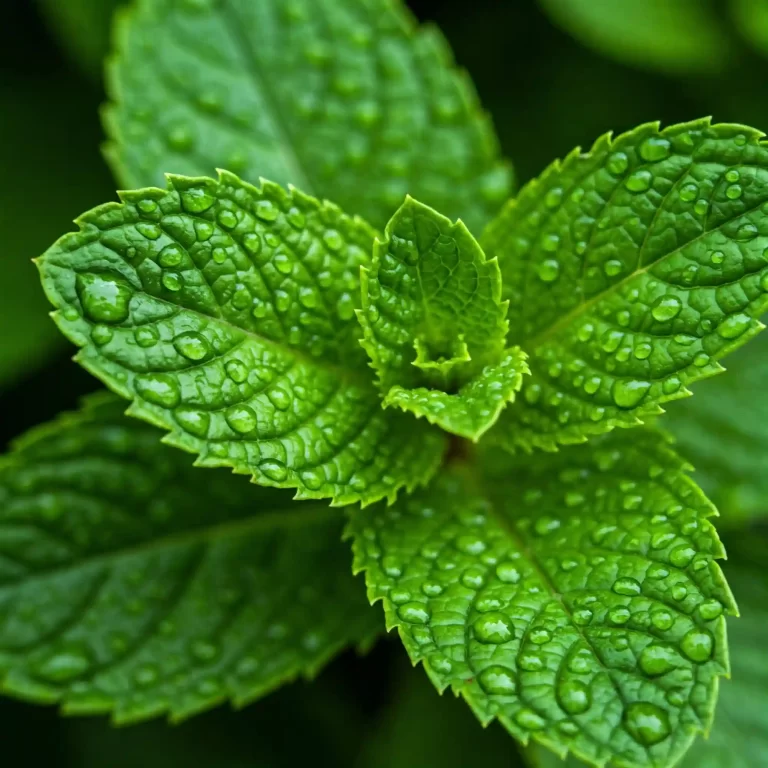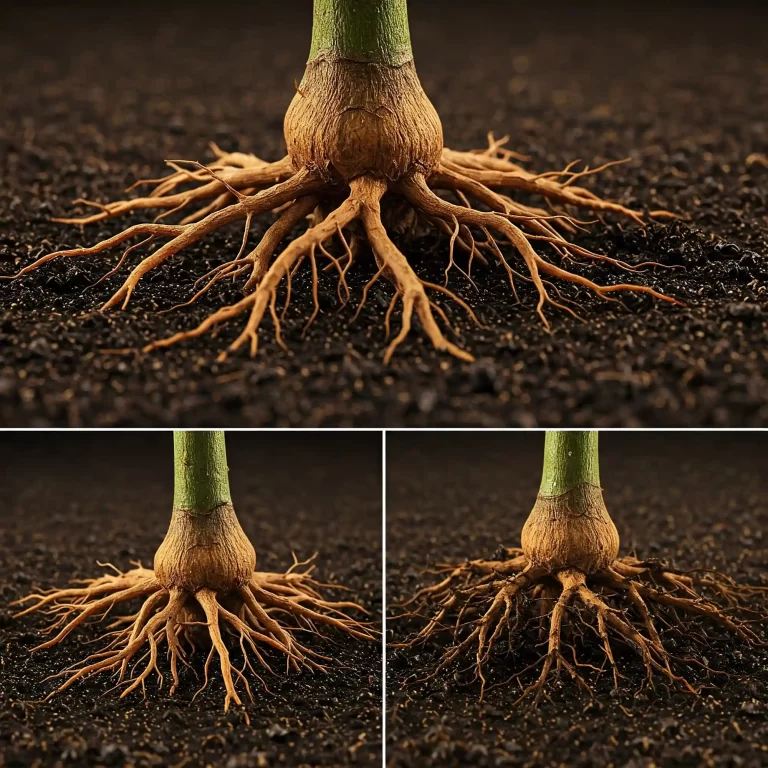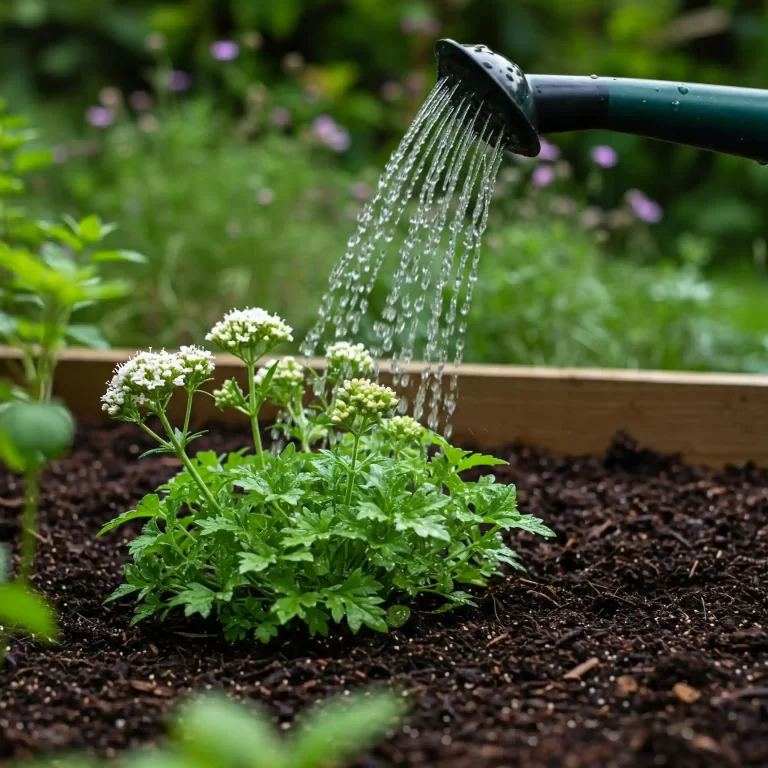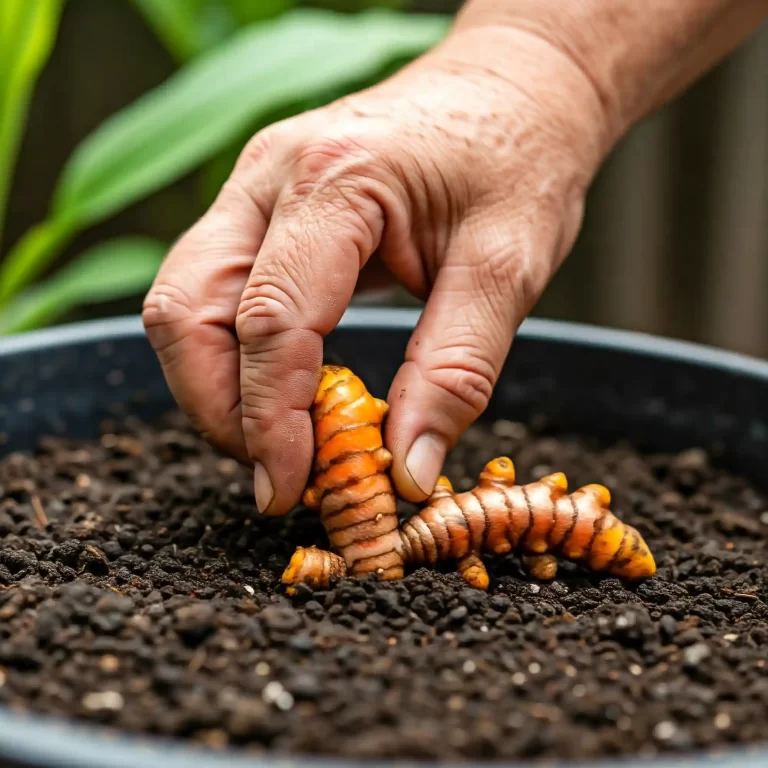Are you fascinated by ancient plants with a rich history and potential health benefits? Do you dream of cultivating your own little piece of botanical history right in your backyard? Many gardeners find themselves intrigued by the Ginkgo biloba tree, often called a “living fossil,” but are unsure where to begin. The prospect of growing this majestic tree, particularly for its valuable leaves, can seem daunting. I understand this feeling. I’ve been there myself, staring at seed packets and wondering if I could actually nurture this ancient wonder. But let me assure you, with the right knowledge and a little patience, growing your own Ginkgo, even for its herbal properties, is entirely achievable. This guide will provide you with the essential steps and insights you need to successfully cultivate your own Ginkgo, transforming that initial uncertainty into the satisfaction of watching your own Ginkgo thrive.
Understanding Ginkgo Biloba: The Living Fossil
The Ginkgo biloba, a true relic of the plant kingdom, holds a special place in my heart, and I believe it will in yours too. You see, this remarkable tree has survived virtually unchanged for over 200 million years, predating even the dinosaurs. I find that absolutely mind-blowing, and I hope you do too. Its resilience and longevity have earned it the moniker “living fossil,” a testament to its remarkable ability to adapt and endure.
Ginkgo’s history is deeply intertwined with human civilization. Its distinctive fan-shaped leaves have been found in fossil records dating back to the Jurassic period. Imagine that! These trees witnessed the rise and fall of countless species. It was widely cultivated in China and later introduced to other parts of the world. It’s not just an ornamental tree, though. For centuries, Ginkgo leaves have been used in traditional Chinese medicine.
While we often think of Ginkgo as a towering tree, in the context of home gardening, I focus on growing it for its leaves, thus adopting the term “Ginkgo herbs.” This approach is more practical for most home gardeners like you, especially if you have limited space.
Here are some key facts about Ginkgo biloba:
- Ancient Lineage: It is the only surviving species in the division Ginkgophyta.
- Unique Leaves: Its fan-shaped leaves with dichotomous venation are instantly recognizable.
- Dioecious Nature: Ginkgo trees are either male or female. This is important to note if you intend to produce seeds, as you’ll need both.
- Hardiness: Ginkgo is generally hardy in USDA zones 3-8, making it adaptable to a wide range of climates.
Ginkgo’s Botanical Classification
| Category | Classification |
| Kingdom | Plantae |
| Division | Ginkgophyta |
| Class | Ginkgoopsida |
| Order | Ginkgoales |
| Family | Ginkgoaceae |
| Genus | Ginkgo1 |
| Species | Ginkgo biloba |
This table helps you understand where Ginkgo sits in the world of plants.
Ginkgo’s Chemical Components
| Component | Properties |
| Flavonoids | Antioxidants that protect cells from damage. |
| Terpenoids | Contribute to improved blood flow. |
| Ginkgolides | Unique to Ginkgo, may have anti-inflammatory effects. |
| Bilobalide | Another unique compound, may have neuroprotective properties. |
These compounds are the reason for Ginkgo’s traditional medicinal uses.
I remember the first time I saw a mature Ginkgo tree in autumn. Its leaves had turned a vibrant golden yellow, creating a stunning spectacle. It was then that I truly understood the allure of this ancient tree. Now, I hope to share that experience with you by helping you grow your own.
This detailed background information provides a solid foundation for understanding the plant you’re about to cultivate. It’s not just about knowing how to grow Ginkgo, but also why it’s such a remarkable species.
Choosing Your Ginkgo: Seeds, Cuttings, or Saplings?
Now that you understand the fascinating history and characteristics of Ginkgo, let’s explore how you can actually bring one into your garden. You have three main options: growing from seeds, propagating from cuttings, or purchasing a young sapling. Each method has its own set of advantages and disadvantages, and I’ll walk you through them to help you make the best choice for your situation.
Growing from Seeds:
Starting from seed can be a rewarding experience, allowing you to witness the entire life cycle of the Ginkgo. However, it’s also the most time-consuming method. Ginkgo seeds require a period of cold stratification to germinate, which mimics the natural winter conditions they would experience in the wild.
- Collecting Seeds: If you have access to a female Ginkgo tree, you can collect the seeds in the fall after they have fallen to the ground. Be aware that the fleshy outer coating of the seeds has a rather unpleasant odor, so wearing gloves is advisable.
- Stratification: To stratify the seeds, you’ll need to clean them thoroughly and then place them in a moist medium, such as sand or peat moss, in a sealed container in your refrigerator for several weeks. This cold period breaks the seed’s dormancy and prepares it for germination.
- Planting: After stratification, plant the seeds in small pots filled with well-draining potting mix. Keep the soil moist but not waterlogged, and place the pots in a warm, sunny location. Germination can take several weeks or even months, so patience is key.
Propagating from Cuttings:
Propagating from cuttings is a faster way to obtain a new Ginkgo plant, as you’re essentially creating a clone of the parent tree. This method is also useful if you have a specific Ginkgo variety you want to replicate.
- Taking Cuttings: Take cuttings from healthy, semi-hardwood growth in late spring or early summer. Choose stems that are about 4-6 inches long and remove the lower leaves.
- Rooting: Dip the cut ends of the cuttings in rooting hormone to encourage root development. Then, plant the cuttings in a moist rooting medium, such as perlite or vermiculite.
- Care: Keep the cuttings in a warm, humid environment, and provide them with indirect sunlight. It can take several weeks for roots to develop, so be patient and keep the medium consistently moist.
Purchasing a Sapling:
The easiest and fastest way to get a Ginkgo tree is to purchase a sapling from a reputable nursery. This option allows you to skip the germination and rooting stages and start with a young, established tree.
- Choosing a Sapling: When selecting a sapling, look for a healthy tree with a strong central leader and a well-developed root system. Avoid trees with signs of disease or damage.
- Planting: Plant the sapling in a prepared planting site that meets the Ginkgo’s growing requirements.
Here’s a quick comparison of the three methods:
Ginkgo Propagation Methods
| Method | Pros | Cons |
| Growing from Seeds | Rewarding, allows you to witness the full life cycle | Time-consuming, requires stratification, germination can be slow |
| Propagating Cuttings | Faster than seeds, creates a clone of the parent tree | Requires some skill, not always successful |
| Purchasing a Sapling | Easiest and fastest, starts with an established tree | More expensive than seeds or cuttings |
In my experience, purchasing a sapling is the most convenient option for most home gardeners, especially if you’re eager to see your Ginkgo growing quickly. However, if you enjoy the challenge of propagation or want to save money, growing from seeds or cuttings can be a fulfilling experience.
Planting Your Ginkgo: Location, Soil, and Sunlight
Now that you’ve chosen your Ginkgo—whether it’s a seed, cutting, or sapling—it’s time to get it planted. This stage is crucial, as providing the right environment will set the foundation for your Ginkgo’s healthy growth. I’ve learned from experience that careful planning at this stage pays off significantly in the long run.
Ideal Growing Conditions
Ginkgo trees are adaptable, but they do have preferences. Here’s what I’ve found works best:
- Sunlight: Ginkgo thrives in full sun, which means at least six hours of direct sunlight per day. However, it can also tolerate partial shade, especially in hotter climates. If you live in an area with intense summer heat, providing some afternoon shade can prevent leaf scorch.
- Soil: Well-draining soil is essential for Ginkgo. These trees don’t tolerate soggy conditions, which can lead to root rot. I recommend a sandy loam soil that allows excess water to drain away quickly. If your soil is heavy clay, you can amend it with compost and other organic matter to improve drainage.
- Hardiness Zones: Ginkgo is generally hardy in USDA zones 3-8. This means it can withstand a wide range of temperatures, from cold winters to hot summers. However, young trees may need some protection from extreme weather conditions, especially during their first few years.
Preparing the Planting Site
Before you plant your Ginkgo, it’s important to prepare the planting site properly. Here’s what I do:
- Choose the Right Location: Select a location that receives ample sunlight and has well-draining soil. Also, consider the mature size of the tree, which can reach up to 80 feet tall and 50 feet wide. Make sure there’s enough space for it to grow without interfering with buildings or power lines.
- Dig a Hole: Dig a hole that’s twice as wide as the root ball and just as deep. This will allow the roots to spread out easily.
- Amend the Soil: If your soil is heavy clay or sandy, amend it with compost or other organic matter to improve drainage and fertility.
- Plant the Tree: Carefully remove the tree from its container and place it in the hole. Make sure the top of the root ball is level with the ground.
- Backfill the Hole: Fill the hole with soil and gently firm it around the base of the tree.
- Water Thoroughly: Water the tree thoroughly to settle the soil and remove any air pockets.
- Mulch: Apply a layer of mulch around the base of the tree to help retain moisture and suppress weeds.
Step-by-Step Planting Instructions
Here’s a more detailed look at the planting process:
- Dig a hole that’s twice as wide as the root ball and just as deep.
- Amend the soil with compost or other organic matter if needed.
- Carefully remove the tree from its container.
- Place the tree in the hole, ensuring the top of the root ball is level with the ground.
- Backfill the hole with soil and gently firm it around the base of the tree.
- Water the tree thoroughly.
- Apply a layer of mulch around the base of the tree.
Additional Tips
- Plant in the fall or early spring: This will give the tree time to establish its roots before the onset of extreme weather conditions.
- Protect young trees from strong winds: Young Ginkgo trees are susceptible to wind damage, so you may need to provide some support.
- Water regularly during the first year: This will help the tree establish its root system.
- Fertilize sparingly: Ginkgo trees are not heavy feeders, so you only need to fertilize them once or twice a year.
By following these tips, you can ensure that your Ginkgo gets off to a strong start and thrives for many years to come.
Caring for Your Ginkgo: Watering, Fertilizing, and Pruning
Once your Ginkgo is planted, providing proper care is essential for its continued health and growth. From my years of experience, I’ve learned that consistent attention to watering, fertilization, and pruning can make a significant difference in how well your Ginkgo thrives.
Watering
Young Trees:
During the first few years, regular watering is crucial to help your Ginkgo establish a strong root system. I recommend watering deeply once a week, especially during dry periods. Ensure the soil is moist about an inch below the surface, but avoid overwatering, which can lead to root rot.
Established Trees:
Once your Ginkgo is established, it becomes more drought-tolerant. You’ll only need to water it during extended dry spells. However, during the first year, consistent watering is crucial to encourage healthy root development.
Fertilizing
Ginkgo trees are not heavy feeders, so you won’t need to fertilize them frequently. I recommend fertilizing young trees once in the spring with a balanced, slow-release fertilizer. For established trees, you can fertilize every other year or as needed.
Type of Fertilizer:
A balanced, slow-release fertilizer with an NPK ratio of 10-10-10 or similar works well for Ginkgo trees.
Application:
Apply the fertilizer according to the package instructions, and be sure to water it in well.
Pruning
Pruning is essential to maintain the shape and health of your Ginkgo tree. I recommend pruning young trees to establish a strong central leader and remove any damaged or crossing branches. For established trees, you can prune to remove dead or diseased wood and maintain the desired shape.
Best Time to Prune:
The best time to prune Ginkgo trees is in late winter or early spring before new growth emerges.
Pruning Techniques:
Use sharp, clean pruning shears or a saw to make clean cuts. Avoid cutting into the branch collar, which is the swollen area where the branch meets the trunk.
Additional Tips
Mulching:
Applying a layer of mulch around the base of your Ginkgo tree can help retain moisture, suppress weeds, and regulate soil temperature.
Pest and Disease Management:
Ginkgo trees are relatively pest and disease-free. However, they can occasionally be affected by spider mites or scale insects. If you notice any signs of infestation, you can treat the tree with insecticidal soap or horticultural oil.
By following these care tips, you can ensure that your Ginkgo tree thrives for many years to come.
Harvesting and Using Ginkgo Leaves (For Small-Scale Home Use)
While growing Ginkgo for its ornamental value is rewarding in itself, you might also be interested in harvesting its leaves for small-scale home use. I want to emphasize that this section focuses on personal use and not commercial harvesting. It’s also crucial to understand that I am not providing medical advice, and you should always consult with a healthcare professional before using Ginkgo for medicinal purposes.
When to Harvest
The best time to harvest Ginkgo leaves is in the fall, after they have turned a vibrant golden yellow. This is when the leaves contain the highest concentration of beneficial compounds. I usually wait until after a few light frosts, as this seems to enhance the potency of the leaves.
How to Harvest
Harvesting Ginkgo leaves is a simple process. Just follow these steps:
- Choose healthy leaves: Select leaves that are free from blemishes, damage, or disease.
- Gently pluck the leaves: Carefully pluck the leaves from the branches, being mindful not to damage the tree.
- Rinse the leaves: Rinse the leaves under cool water to remove any dirt or debris.
Drying and Storing
Once you’ve harvested the leaves, you’ll need to dry them properly to prevent mold growth. Here’s how I do it:
- Spread the leaves: Spread the leaves in a single layer on a clean, dry surface, such as a screen or a baking sheet.
- Dry in a well-ventilated area: Place the leaves in a well-ventilated area away from direct sunlight.
- Turn the leaves regularly: Turn the leaves every day to ensure even drying.
- Store in an airtight container: Once the leaves are completely dry, store them in an airtight container in a cool, dark place.
Using Ginkgo Leaves (For Personal Use)
Ginkgo leaves can be used to make tea or extracts for personal use. However, it’s essential to do your research and consult with a healthcare professional before using Ginkgo for medicinal purposes.
Making Ginkgo Tea
To make Ginkgo tea, simply steep a few dried leaves in hot water for 5-10 minutes. You can then strain the tea and enjoy it warm.
Important Considerations
- Consult a healthcare professional: Before using Ginkgo for medicinal purposes, it’s essential to consult with a healthcare professional.
- Start with small amounts: If you’re new to using Ginkgo, start with small amounts and gradually increase as needed.
- Be aware of potential side effects: Ginkgo can interact with certain medications, so it’s important to be aware of potential side effects.
By following these guidelines, you can safely harvest and use Ginkgo leaves for personal use.
Troubleshooting Common Ginkgo Growing Problems
Even with the best care, you might encounter some challenges while growing your Ginkgo. From my experience, early detection and prompt action are key to resolving these issues and ensuring your tree’s health. Let’s explore some common problems and their solutions:
Slow Growth
Possible Causes:
- Insufficient sunlight: Ginkgo trees need at least six hours of direct sunlight per day to thrive.
- Poor soil conditions: Heavy clay soil or compacted soil can restrict root growth and hinder nutrient uptake.
- Lack of nutrients: Although Ginkgo trees are not heavy feeders, they still need essential nutrients for growth.
Solutions:
- Relocate the tree: If your Ginkgo is not getting enough sunlight, consider transplanting it to a sunnier location.
- Amend the soil: Improve soil drainage and aeration by adding compost or other organic matter.
- Fertilize: Apply a balanced, slow-release fertilizer in the spring to provide essential nutrients.
Leaf Scorch
Possible Causes:
- Insufficient watering: During dry periods, Ginkgo leaves can become scorched, especially if the tree is young.
- Excessive heat: Intense summer heat can also cause leaf scorch, even with adequate watering.
- Salt damage: Salt from roads or sidewalks can damage Ginkgo leaves.
Solutions:
- Water deeply and regularly: Ensure your Ginkgo receives adequate water, especially during dry periods.
- Provide shade: If you live in a hot climate, provide some afternoon shade to protect the leaves from scorching.
- Avoid salt exposure: Plant your Ginkgo away from roads or sidewalks where it may be exposed to salt.
Pest Infestations
Possible Pests:
- Spider mites: These tiny pests can cause yellowing and stippling of the leaves.
- Scale insects: These armored insects can suck sap from the leaves and branches.
Solutions:
- Insecticidal soap: Apply insecticidal soap to control spider mites and scale insects.
- Horticultural oil: Horticultural oil can also be effective in controlling these pests.
- Beneficial insects: Encourage beneficial insects, such as ladybugs and lacewings, which prey on spider mites and scale insects.
Disease Problems
Possible Diseases:
- Fungal diseases: Although rare, Ginkgo trees can be susceptible to certain fungal diseases, such as leaf spot.
Solutions:
- Fungicides: Apply appropriate fungicides to control fungal diseases.
- Improve air circulation: Prune branches to improve air circulation and reduce humidity, which can help prevent fungal diseases.
Additional Tips
- Monitor your Ginkgo regularly: Check your Ginkgo for signs of pests, diseases, or other problems regularly.
- Take action promptly: The sooner you address any issues, the easier they will be to resolve.
- Consult with a local arborist or nursery: If you’re unsure about how to address a particular problem, seek advice from a local arborist or nursery.
By being vigilant and proactive, you can overcome these challenges and ensure your Ginkgo’s continued health and vitality.
FAQ: Frequently Asked Questions About Growing Ginkgo Herbs
- How long does it take to grow a Ginkgo tree from seed?
Growing a Ginkgo tree from seed is a patient endeavor. It can take several weeks or even months for the seeds to germinate. Once germinated, the young seedlings will grow relatively slowly for the first few years. It can take 15-20 years for a Ginkgo tree to reach maturity.
- What is the best soil for growing Ginkgo herbs outdoors?
Ginkgo trees prefer well-draining soil that is slightly acidic to neutral in pH. The soil should be rich in organic matter and have good drainage. If your soil is heavy clay or sandy, you can amend it with compost or other organic matter to improve its drainage and fertility.
- How to grow Ginkgo herbs in zone 7 for beginners?
Ginkgo trees are hardy in USDA zones 3-8, making them suitable for growing in zone 7. Here are some tips for growing Ginkgo trees in zone 7:
- Choose a sunny location with well-draining soil.
- Plant your Ginkgo tree in the spring or fall.
- Water your Ginkgo tree regularly, especially during dry periods.
- Fertilize your Ginkgo tree once a year in the spring.
- Prune your Ginkgo tree as needed to remove dead or damaged branches.
- Can I grow Ginkgo in a pot?
Yes, you can grow Ginkgo in a pot, but it is important to choose a pot that is large enough to accommodate the tree’s root system. The pot should also have drainage holes to prevent water fromlogging the soil. Use a well-draining potting mix and water the tree regularly.
- How often should I water my Ginkgo tree?
Water your Ginkgo tree deeply once a week, especially during dry periods. Allow the soil to dry out slightly between waterings. Avoid overwatering, which can lead to root rot.
- Are Ginkgo trees messy?
Female Ginkgo trees produce fruit that can be messy and have an unpleasant odor. If you are concerned about mess, you may want to plant a male Ginkgo tree instead.
- How to grow organic Ginkgo herbs without pesticides?
Ginkgo trees are relatively pest and disease-free. However, you can take some precautions to prevent problems:
- Choose a sunny location with well-draining soil.
- Water your Ginkgo tree regularly, but avoid overwatering.
- Prune your Ginkgo tree as needed to remove dead or damaged branches.
- Monitor your Ginkgo tree for signs of pests or diseases.
- If you find pests or diseases, treat them with organic or natural methods.
Conclusion:
Growing Ginkgo herbs is a fascinating and rewarding endeavor, connecting you to a lineage that spans millennia. As you’ve learned, cultivating these remarkable trees is within reach for any gardener, regardless of experience level. By understanding their basic needs – from sunlight and soil preferences to the nuances of watering and pruning – you can nurture a thriving Ginkgo right in your own backyard.
Remember, patience is key, especially if you choose to start from seeds. But whether you opt for a young sapling or embark on the journey of propagation, the rewards are well worth the effort. Not only will you enjoy the beauty of this unique tree with its vibrant seasonal transformations, but you’ll also have the opportunity to harvest its leaves for personal use, connecting with its rich history of traditional herbal applications.
As you embark on your Ginkgo growing adventure, remember these key takeaways:
- Sunlight is essential: Ginkgo trees thrive in full sun, so choose a location that receives at least six hours of direct sunlight per day.
- Well-draining soil is crucial: Ginkgo trees are susceptible to root rot, so ensure the soil is well-draining.
- Water regularly, especially during the first year: Consistent watering will help your Ginkgo establish a strong root system.
- Prune as needed to maintain shape and remove dead or damaged branches.
- Harvest leaves in the fall for personal use, but always consult with a healthcare professional before using Ginkgo for medicinal purposes.
With these tips in mind, you’re well on your way to successfully growing Ginkgo herbs and enjoying the many benefits this ancient tree has to offer. So go ahead, embrace the challenge, and watch as your own Ginkgo flourishes, a testament to your nurturing care and a living link to the past.
